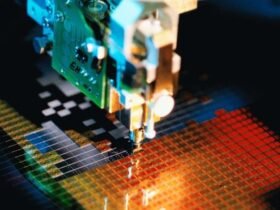The burgeoning field of robotics and augmented reality (AR) is witnessing a significant revolution, primarily spearheaded by advancements in simultaneous localization and mapping (SLAM). This technology, essential for enabling machines to understand and navigate their surroundings autonomously, has seen a range of innovative breakthroughs. Recently, new patents on simultaneous localization and mapping have set the stage for transformative changes across various industries, from manufacturing and logistics to healthcare and entertainment.
At the core of these advancements are SLAM patents that enhance automated systems by improving how robots perceive and interact with their environment. The latest patent application on simultaneous localization mapping outlines a novel approach that integrates sophisticated algorithms with real-time sensor data. This enhancement not only boosts the accuracy but also the speed of mapping in dynamic settings, a leap forward from previous methods.
Driving Innovation in Robotics
Patents on localization and mapping have especially made their mark in the realm of robotics. Localizing and mapping patents for robots provide the foundational technology enabling robots to perform complex tasks more efficiently. Whether it’s navigating through a bustling warehouse, performing intricate surgeries, or ensuring security in public spaces, robotic systems benefit immensely from improved SLAM capabilities.
The integration of predictive modeling with real-time data as noted in the newer patents for simultaneous localization & mapping allows robotic systems to anticipate changes within an environment. This prescience facilitates smoother operation and adaptability, which are crucial in settings where conditions change rapidly or are unpredictable.
Augmented Reality Gets a Boost
In the domain of augmented reality, SLAM technology plays a pivotal role by bridging the gap between virtual experiences and real-world interactions. Localization mapping patents ensure that AR platforms can offer immersive experiences with higher precision and less latency. For instance, when used in AR gaming and educational applications, enhanced SLAM technology enables a seamless blend of real and virtual worlds, thereby enriching user engagement and learning experiences.
Aiding Various Sectors Through Enhanced Navigation
The patents on robotics and localizing for mapping are not confined to conventional areas; they extend their benefits to sectors like automotive, emergency response, and urban planning. In autonomous vehicles, accurate and fast SLAM technology ensures safer navigation around city streets and highways. For emergency responders, being able to quickly map an unfamiliar location can mean the difference between life and death. Meanwhile, urban planners can utilize these technologies to create more accurate models of cities, aiding in more efficient infrastructure development.
Global Impact
The global applicability of patents on localization and mapping underscores their importance. As nations and businesses strive for greater efficiency and safety, the demand for advanced automated systems equipped with robust SLAM technology continues to grow. This trend is encouraged by the dissemination of intellectual property through globalization and international cooperation in technological development.
The Future of SLAM Patents
Looking forward, the innovation trajectory suggests we will continue to see significant enhancements in how automated systems use SLAM technology. With each patent application on simultaneous localization mapping pushing the boundaries of what’s possible, industries worldwide are set to benefit from these developments. The potential for further integration into diverse fields promises not only advancements in existing applications but also spurs innovation in unexplored territories.
As automated systems become increasingly integral to industrial operations, urban management, and everyday conveniences, the continuous refinement of SLAM technologies remains pivotal. The transformative impacts of these patents highlight an exciting era of technological evolution, hinting at an even more interconnected and efficiently navigated future.







